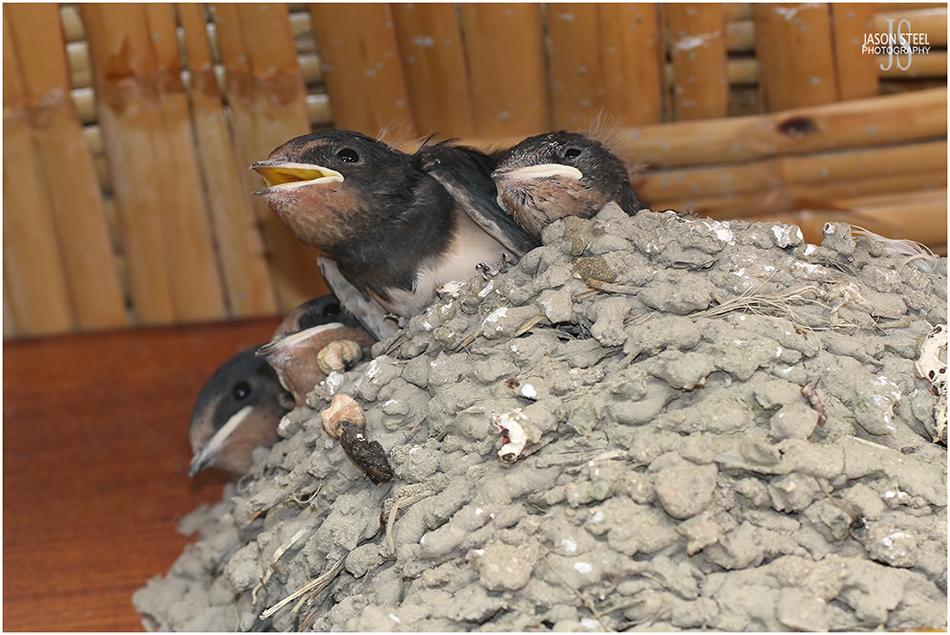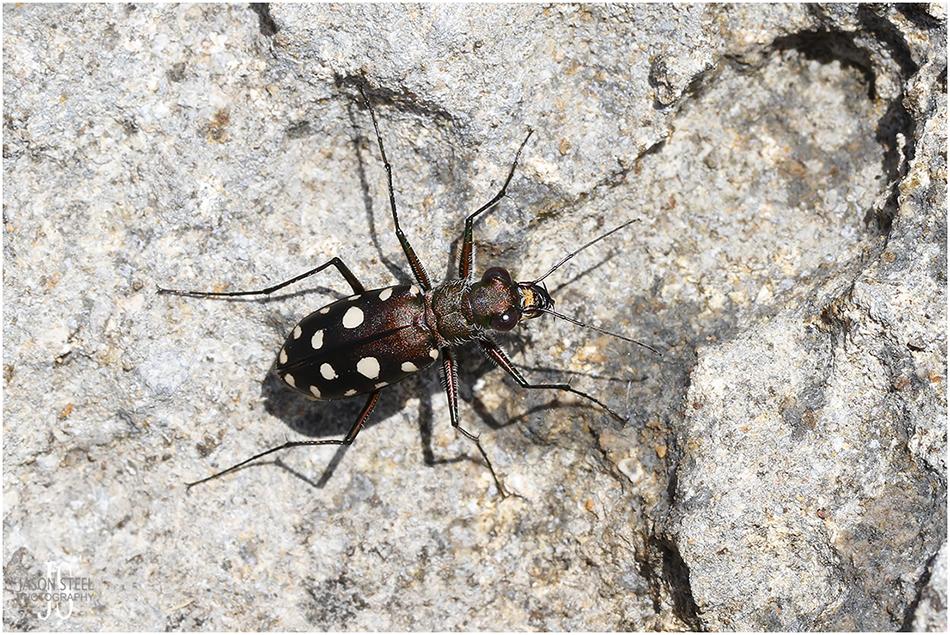
Littoral Tiger Beetle, Calomera littoralis winkleri, hunting on rocks on Paphos Beach, May, 2019.
Littoral Tiger Beetle (Calomera littoralis winkleri)
This coastal species of Tiger Beetle can be found around rocky areas, sandy soil or salty marshland. It has a body-length of up to 17mm and is a diurnal hunter, feeding on small arthropods. They are very skittish and quick to take evasive action if disturbed. Some will run at great speed whilst others are quick to take to the wing and fly a few metres to safety. Large prominent eyes give these Tiger Beetles excellent vision and make them difficult to approach for photographs. This beetle can be seen active on hot sunny days in great numbers on sandy areas with little or no vegetation or on rocks on the seashore. Females lay eggs in sandy soil and the larvae are quick to dig burrows which serve as retreats when the temperatures drop. The larvae feed on small invertebrates they find on the sand.
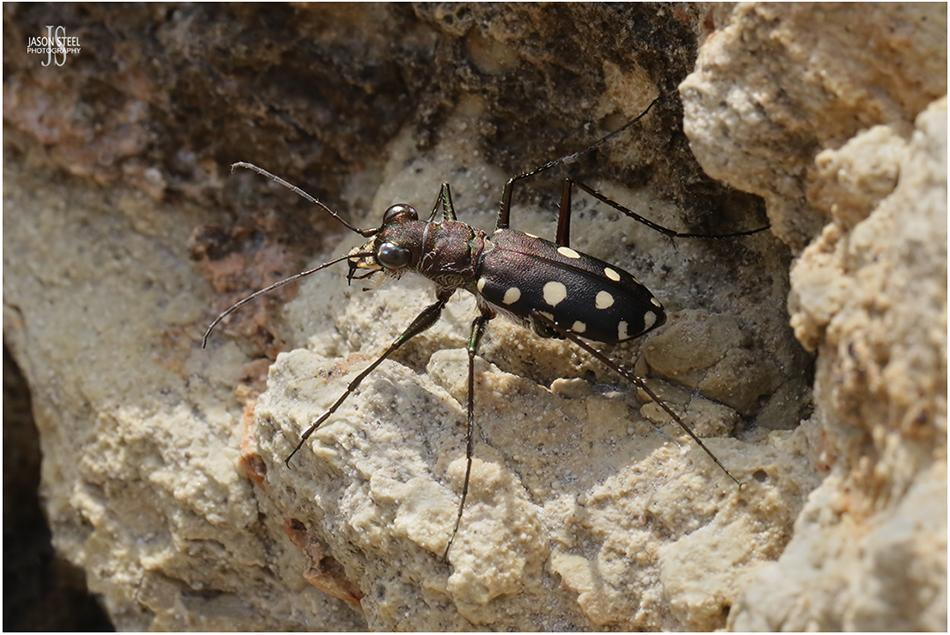
Littoral Tiger Beetle, Calomera littoralis winkleri, hunting on rocks on Paphos Beach, September 2023.
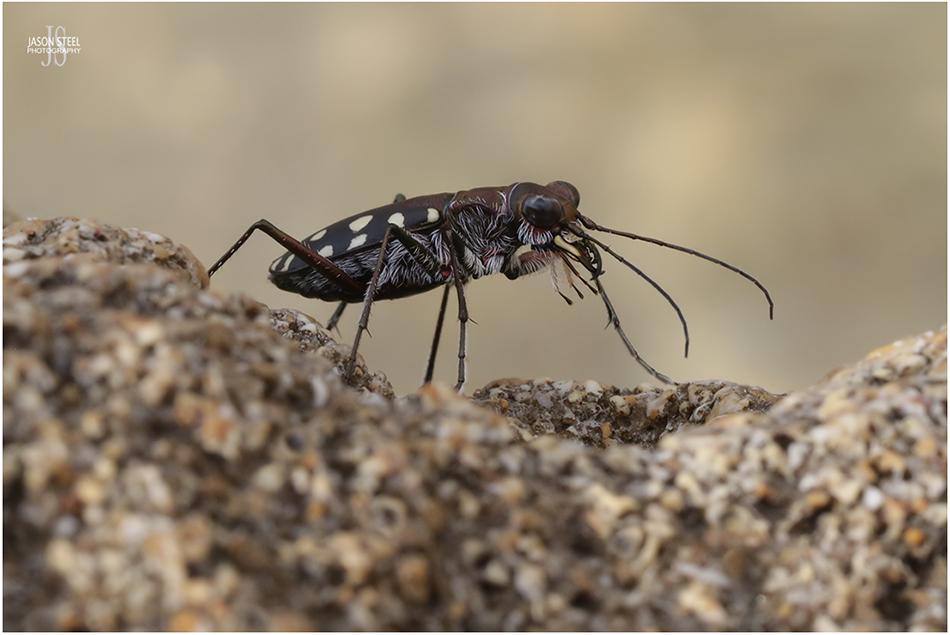
Littoral Tiger Beetle, Calomera littoralis winkleri, hunting on rocks on Paphos Beach, September 2023.
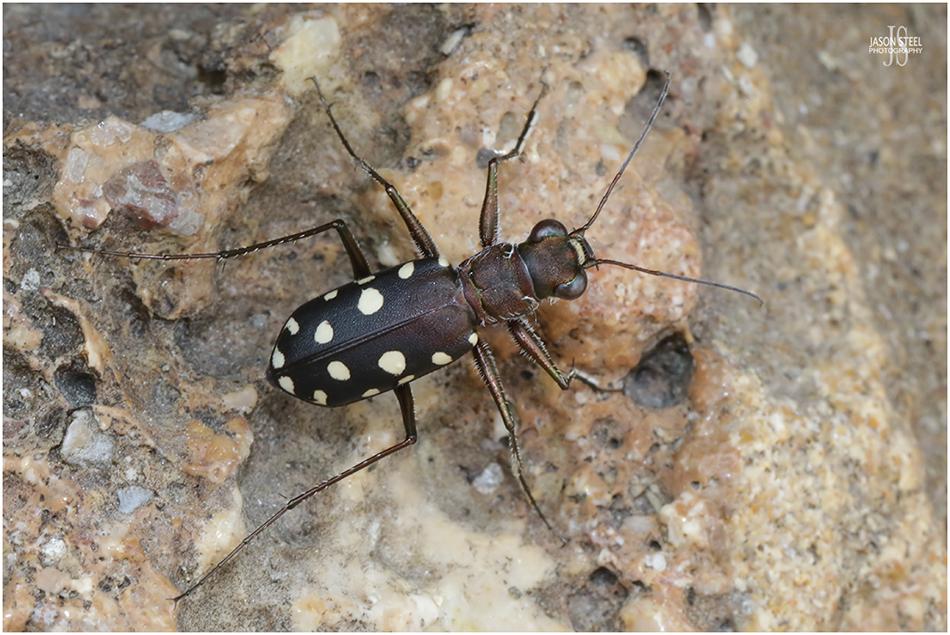
Littoral Tiger Beetle, Calomera littoralis winkleri, hunting on rocks on Paphos Beach, September 2023.

23mm Darkling Beetle (Trachyderma cf philistina) found on sandy soil in Paphos, September 2023.
Darkling Beetle (Trachyderma philistina / Trachyderma philistinum)
The term Darkling Beetle is used for members of the beetle family Tenebrionidae, which consists of over 20,000 different species around the world. Most are dark in colour, are typically found scavenging at ground level, and many are nocturnal. The Darkling Beetle, Trachyderma philistina, is typically found dry habitats. These beetles can sometimes be found congregating in large groups. This Darkling Beetle usually grows to around 20-23mm in length. Trachyderma philistina is not an endemic species to Cyprus but is found from Egypt to UAE to Turkey.
The fluid equivalent to blood, that's present in most in most invertebrates, is known as hemolymph. Studies have shown that the hemolymph of the Darkling Beetle Trachyderma philistina may be useful to the pharmaceutical world in the fight against cancer cells in humans. The use of natural beetle extracts for treating medical conditions is nothing new though. Traditional Chinese medicine has seen the dried biomass of the Blister Beetles, Mylabris phalerata and Mylabris cichorii, which both contain the chemical compound cantharidin, for the treatment of cancer for over 2000 years. Studies have shown that cantharidin, or chemicals derived from it, can destroy numerous types of cancer cells, including those of leukaemia, breast cancer, and pancreatic cancers. Cantharidin has also been used to treat various other diseases and medical conditions including Rabies, Oedema, warts and even impotence. - LINK
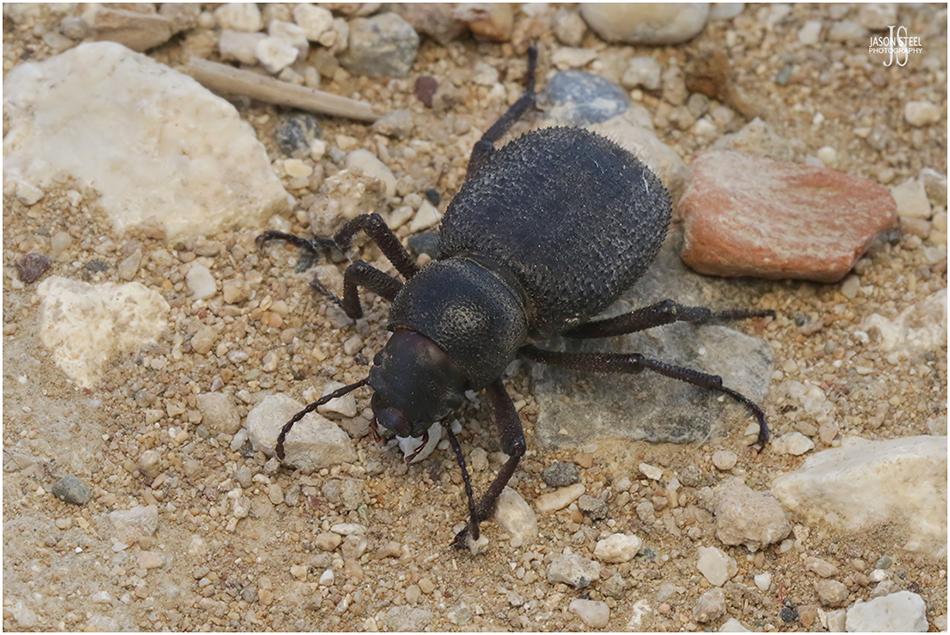
The term Darkling Beetle is used for members of the beetle family Tenebrionidae, which consists of over 20,000 different species around the world.
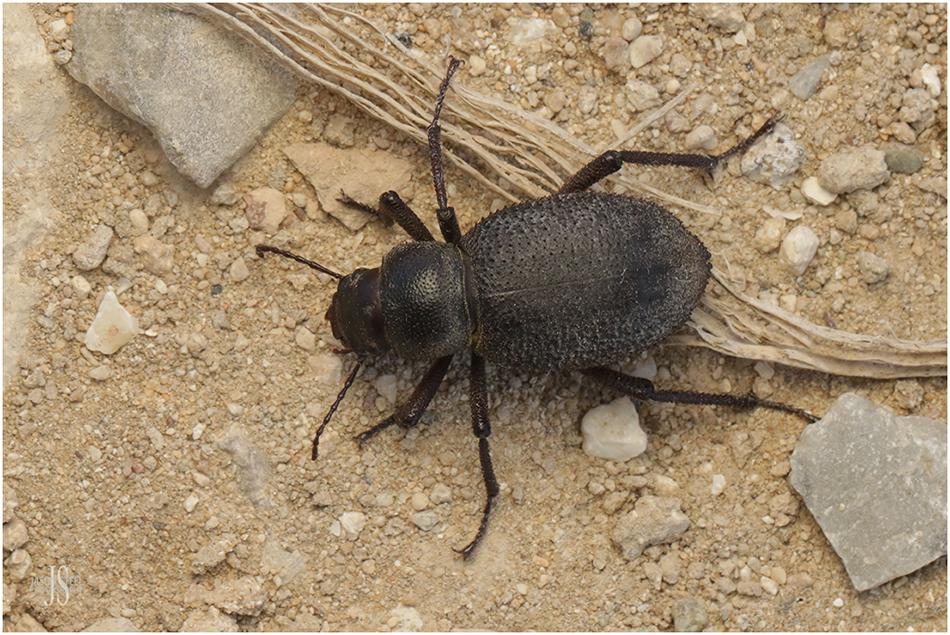
The term Darkling Beetle is used for members of the beetle family Tenebrionidae, which consists of over 20,000 different species around the world.
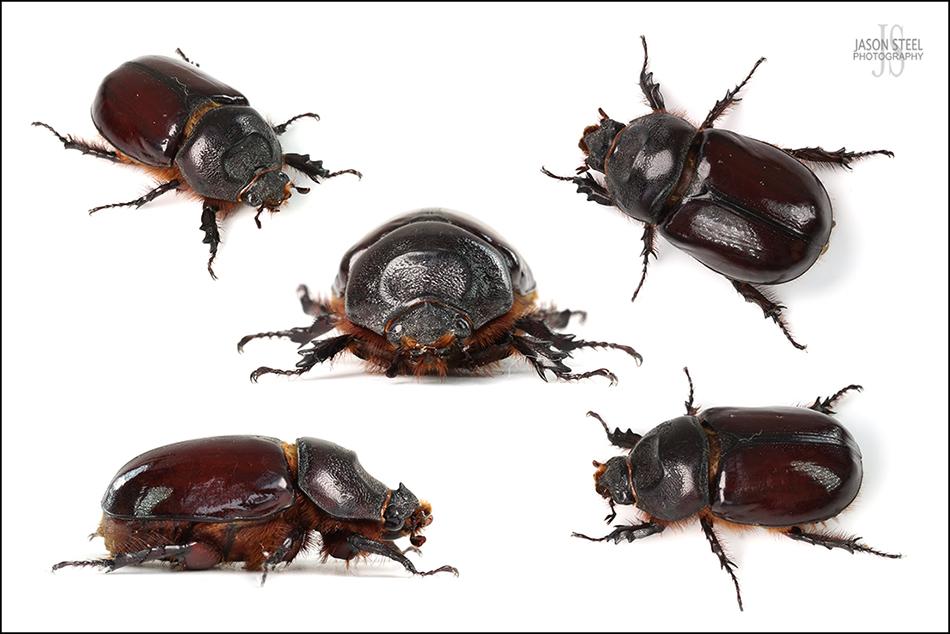
35mm Female European Rhinoceros Beetle - Oryctes nasicornis
European Rhinoceros Beetle - (Oryctes nasicornis)
The European Rhinoceros Beetle is one of the largest species of beetle in Europe, with specimens typically reaching 20-42mm in length, and sometimes up to 47mm. Males are easily identified by the large, curved horn at the front of their head. It is widespread in the Mediterranean area and its range extends to Asia and north Africa.
The larvae live a subterranean life beneath the soil, feeding on decaying plants and wood. Larvae can grow up to 100mm in length and take 2-4 years before reaching maximum size and pupating. During the larval stage the European Rhinoceros Beetle is hunted in dead wood by the parasitic Mammoth Wasp, Megascolia maculata. The Mammoth Wasp lays a single egg directly in the European Rhinoceros Beetle larvae, which when hatched will consume the larvae from inside.
Adult beetles emerge from pupation from the end of March onwards. Some sources claim that adult beetles can only live for a few weeks, whilst other sources claim they can live for several months as an adult beetle. Adult beetles can be encountered right up until the end of August. They are most commonly seen flying at dusk, and at night, during the months of June and July. At night his species is attracted to light and adults can be drawn to homes and street lights. Adult beetles do not generally feed. There are about 19 accepted sub-species of the European Rhinoceros Beetle. It is reported that the European Rhinoceros Beetle is one of the strongest beetles in the world, and is capable of lifting objects weighing up to an incredible 850 times its own body-weight.
Common Rhinoceros Beetle - (Phyllognathus excavatum / Phyllognathus silenus)
Cyprus also has another similar scarab beetle, the Common Rhinoceros Beetle, Phyllognathus excavatum. The Common Rhinoceros Beetle is slightly smaller than the European Rhinoceros Beetle, with females typically reaching just under 20mm and males reaching around 25mm. The horn of the male Common Rhinoceros Beetle is also much less impressive than that of the larger European Rhinoceros Beetle. The C-shaped larvae are white in colour and grow to a length of nearly 50mm. The larvae can be considered a pest to citrus and grapes as they sometimes feed on the young roots and leaves. Usually the larvae feed in decaying organic matter in compost-rich soil. The females can lay eggs up to three times in a year. The adult beetles are nocturnal and can be attracted to light.
The Common Rhinoceros Beetle is also found in North Africa, Central Europe, Ukraine, Mediterranean Basin, Arabia peninsula, Iran, and India.
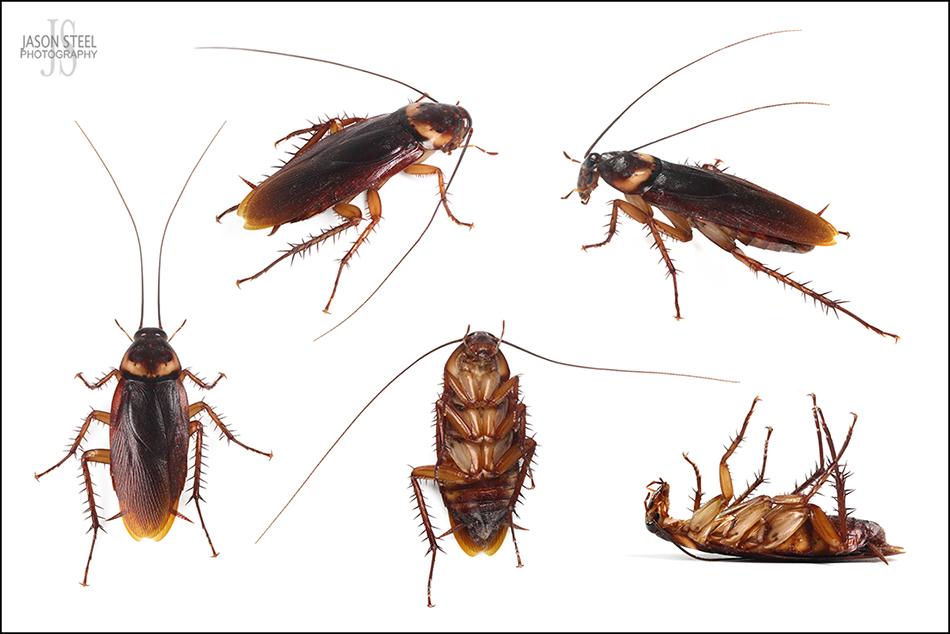
42mm American Cockroach - (Periplaneta americana)
American Cockroach - (Periplaneta americana)
The American Cockroach is the largest of the common cockroaches and adults grow from 35-55mm in length, with 42mm being the average size. Adults develop wings but rarely fly. They are fast runners and have been recorded running at speeds of 3.4 mph. While this might not sound very fast it is the equivalent of a human running at a ludicrous 210 mph! Despite their name the American Cockroach originated from Africa and didn't reach the USA until around 1625AD. They can now be found in most tropical regions with a preference to moist areas. They can also survive in very dry areas as long as they have access to water.
The American Cockroach is considered a pest. They are omnivorous and opportunist feeders and will feed on anything from dead animals, rotting plant matter, clothes, paper, and most food consumed by humans. They secrete an odorous substance that affects both the taste and smell of any food they come in contact with. They also carry bacteria and various diseases including salmonella.
Cockroaches have a powerful bite but do not use it in defence if handled. However they will readily feed on human flesh whether the host is dead or alive. Apparently they are more likely to take a bite from fingernails, eyelashes, hands and feet!
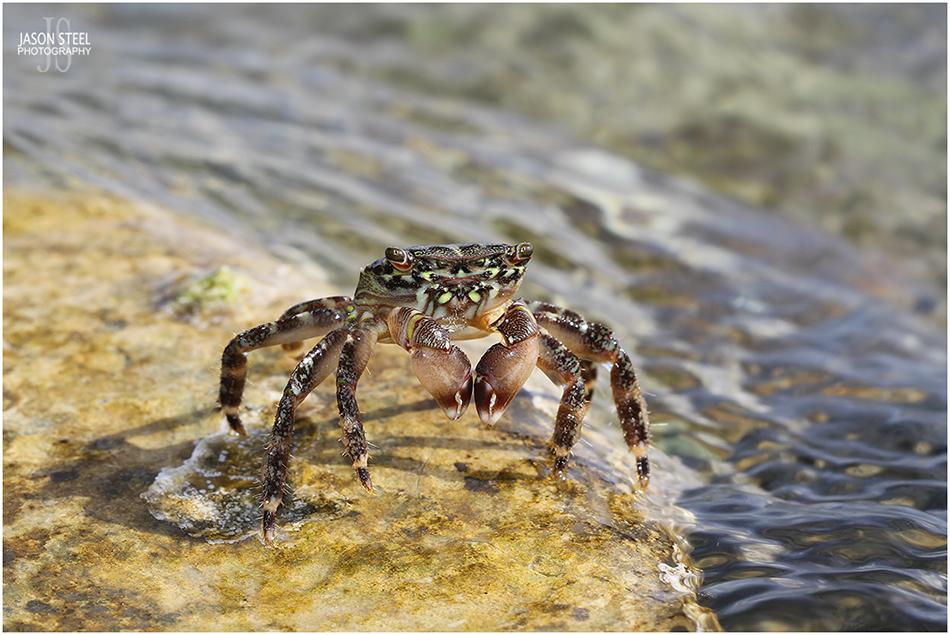
A bright and colourful 40mm Marbled Rock Crab basking on the rocks in Paphos Harbour
Marbled Rock Crab (Pachygrapsus marmoratus)
This small Sea Crab has a carapace growing to a maximum length of 45mm, but more usually 36mm. It is found inhabiting the intertidal areas of rocky shores and beaches. It feeds on algae and various small aquatic sea life, including mussels and limpets.
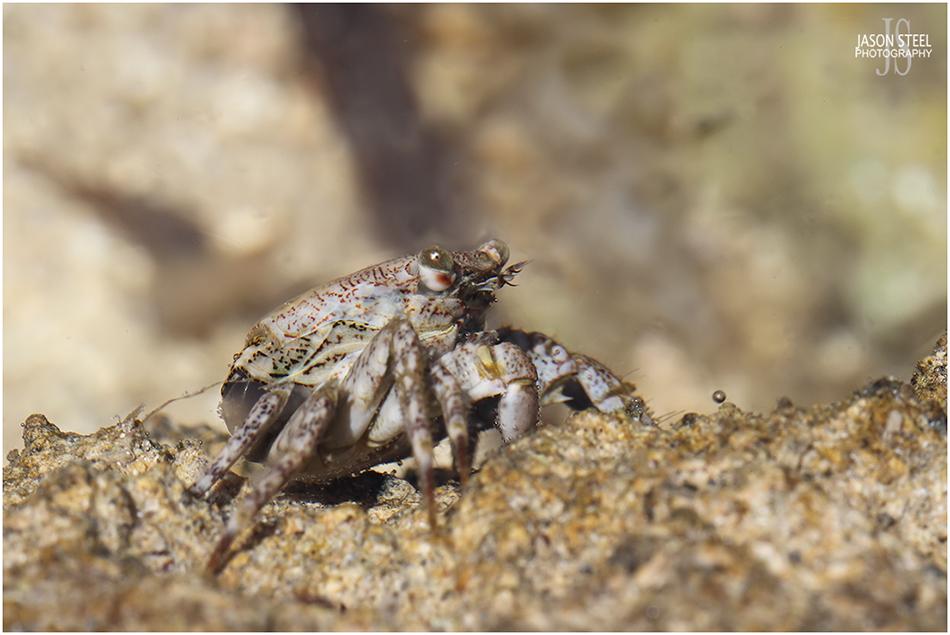
Marbled Rock Crab with a leg-span of around 35mm
This Marbled Rock Crab sat motionless at the edge of a rockpool along the coast of Paphos. As I approached it for photos it wriggled and then pulled away backwards and released itself from its old shell.
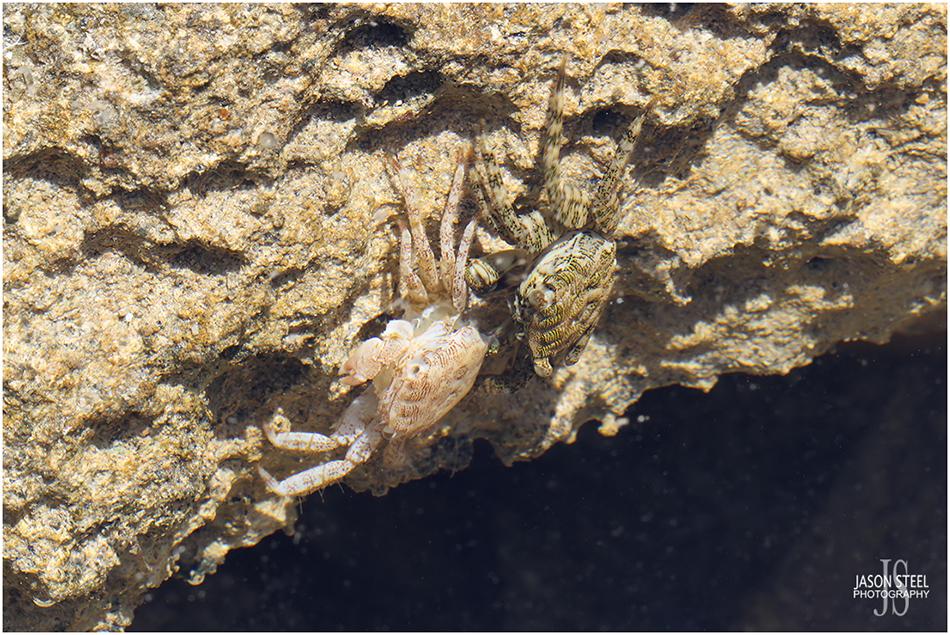
Freshly sloughed 25mm Marbled Rock Crab.
The newly emerged Marbled Rock Crab now basks in shallow water and waits whilst its new shell hardens in the sunlight. At this stage the crab is soft and very vulnerable to predators.
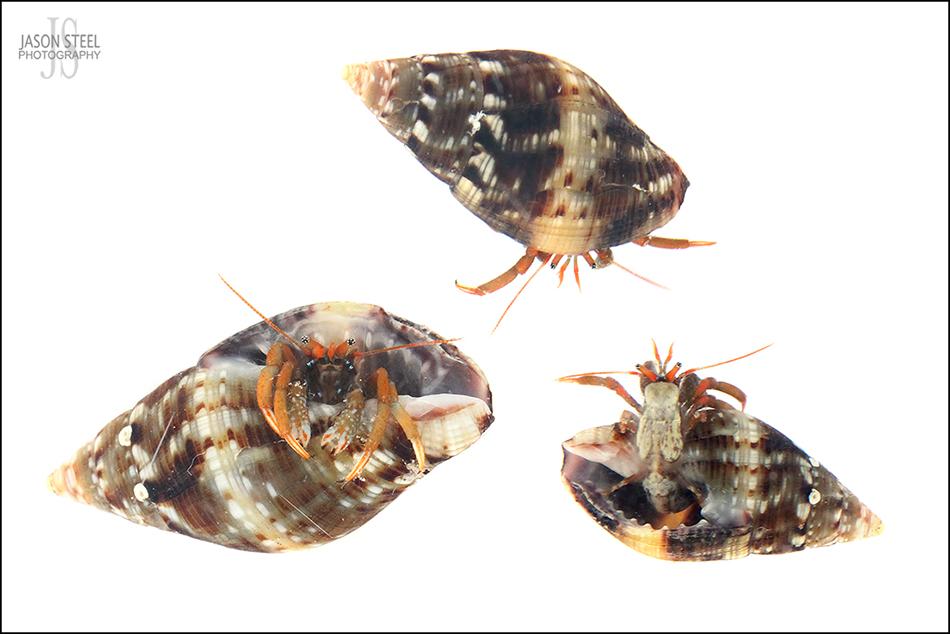
Hermit Crab - Paguridae Sp.
Hermit Crab - (Paguridae Sp.)
Paguridae is a family of Hermit Crabs containing 542 different species. These crabs do not have the typical hardened shell that regular crabs have for protection. Instead they use old shells of snails to live in. As the Hermit Crab grows it will outgrow its adopted shell and have to abandon it and go in search of a larger shell to live in. The tiny Hermit Crab pictured above had a shell of just 12mm in length.
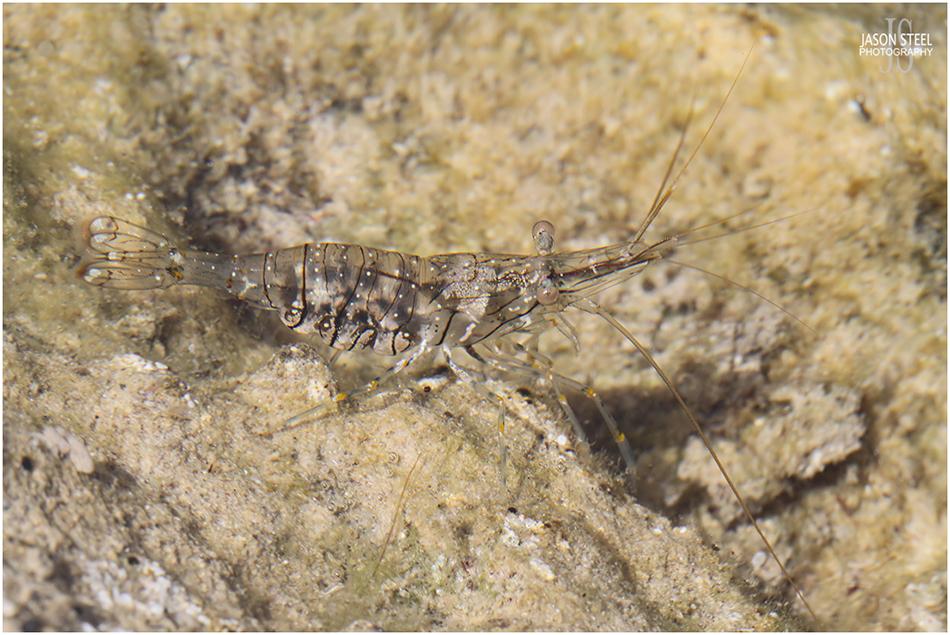
A highly translucent Sea Shrimp
Sea Shrimp
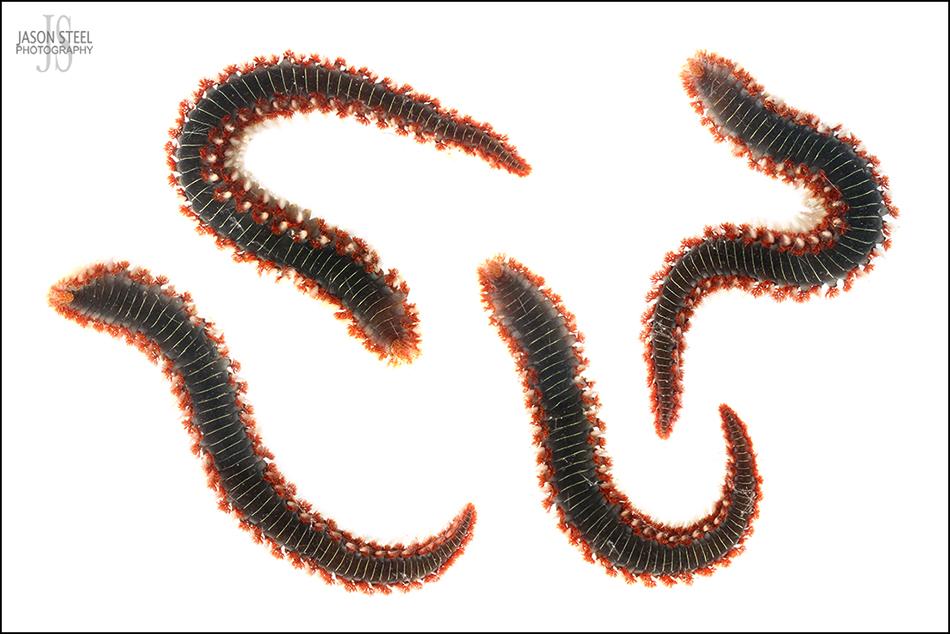
15cm Bristle Worm - Possibly Bearded Fireworm (Hermodice carunculata)
Bearded Fireworm - (Hermodice carunculata)
The Bearded Fireworm is a venomous species of marine Bristle Worm. Usually growing to around 10-15cm but sometimes as large as 35cm. the sides of the Fireworm are covered in tiny bristles that when flaired up can penetrate human skin and inject a powerful neurotoxin causing severe pain lasting for several days and sometimes accompanied by reddening and swelling. During periods of sexual activity the Fireworm is strongly bioluminescent and glows brightly in the dark. Bearded Fireworms are considered common off the coast of Paphos, Cyprus. They can be found in the Mediterranean Sea, Caribbean and Atlantic Ocean.
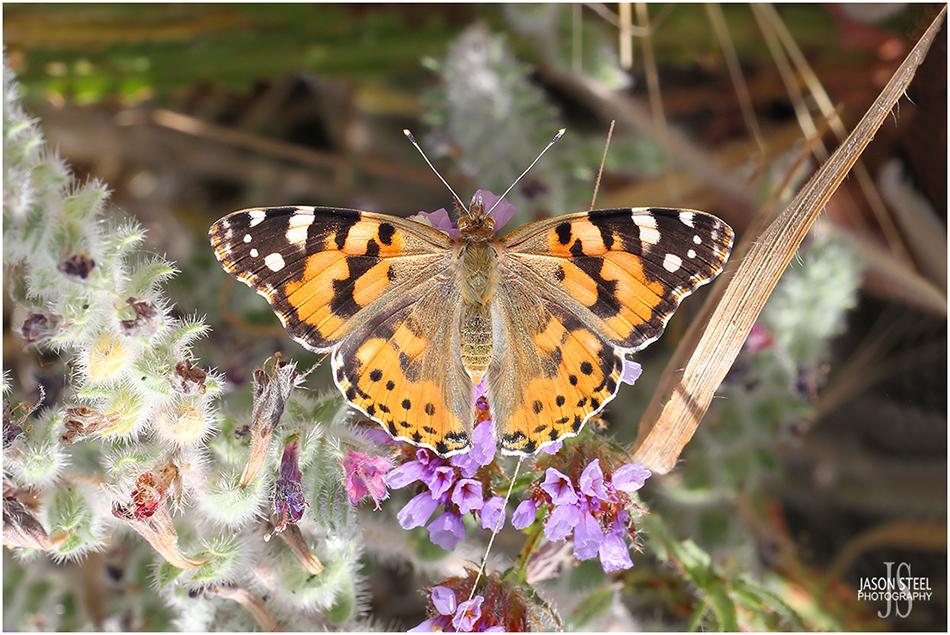
Painted Lady Butterfly (Vanessa cardui)
Painted Lady Butterfly - (Vanessa cardui)
A medium sized and widespread butterfly found across Cyprus throughout the year. Males have a wingspan of 58-70mm, and females 62-74mm. This highly migratory butterfly can been seen in huge numbers in some years as it travels from North Africa and passes through Israel, Cyprus and Turkey, then crosses the Mediterranean Sea and on to Central Europe and the UK. The larvae live in silk tents and feed primarily on thistles (Cirsium sp. and Carduus Sp.) but will also feed on Common Nettles (Urtica dioica).
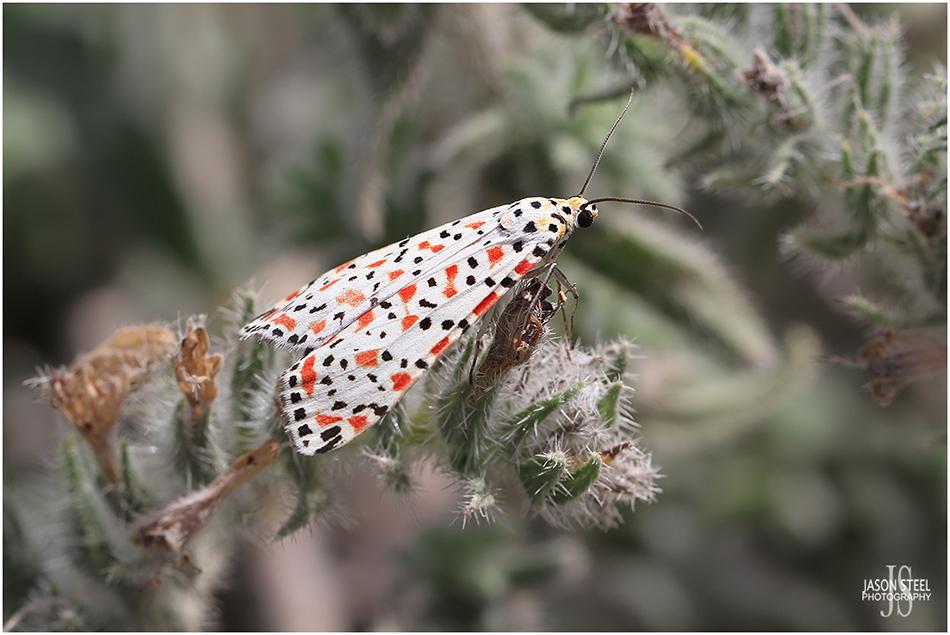
Crimson Speckled Moth (Utetheisa pulchella)
Crimson Speckled Moth - (Utetheisa pulchella)
A medium sized moth wide a wingspan of 29-42mm. Found across Cyprus, the Mediteranean and North Africa and also found on occasion in most of Europe as a migrant species. They favour dry open spaces including meadows, scrubland and parks. Active both day and night with caterpillars feeding on a range of herbaceous plants. Also known as the Crimson Speckled Footman or Crimson Speckled Flunkey.
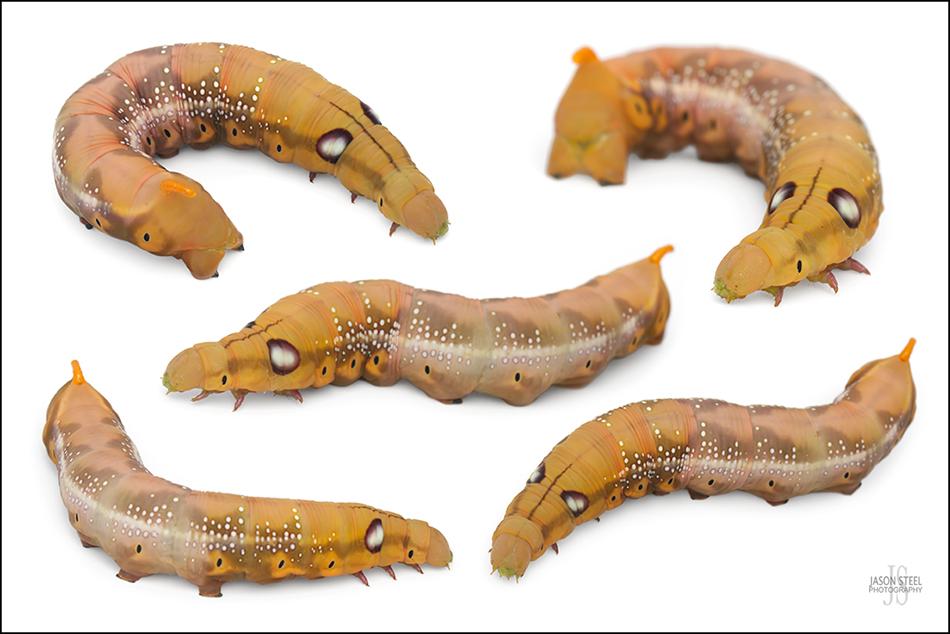
80mm Oleander Hawk-Moth larvae. This specimen was one of 8 found feeding on a bush in Cyprus, September 2023.
Oleander Hawk-Moth - (Daphnis nerii)
The Oleander Hawk-Moth is a large and colourful species with a wing-span of around 90-130mm. Due its green colouration and patterning this moth is sometimes known as the Army Green Moth. The Oleander Hawk-Moth is usually a migrant that's flown over to the UK from Sicily, Crete, Cyprus or Northern Africa. This species is also widespread in Asia too. In the UK adult moths can sometimes be seen from August to September in the south of England, usually at open coastal sites. There is some discrepancy over whether this species has been known to breed in the UK or not. If it does happen then it's a very rare occurrence. The large colourful caterpillars are bright green in colour until their final stage of development. In this final stage, until the larvae reach their full size, they become a rustic orange colour. These larvae can reach up to 130mm in length. The primary larval food-plants are Periwinkle, Vinca spp, and oleander, Nerium oleander. The larvae pupate under loose soil and leaf litter. In warm conditions the moths can emerge as quickly as 18-30 days.
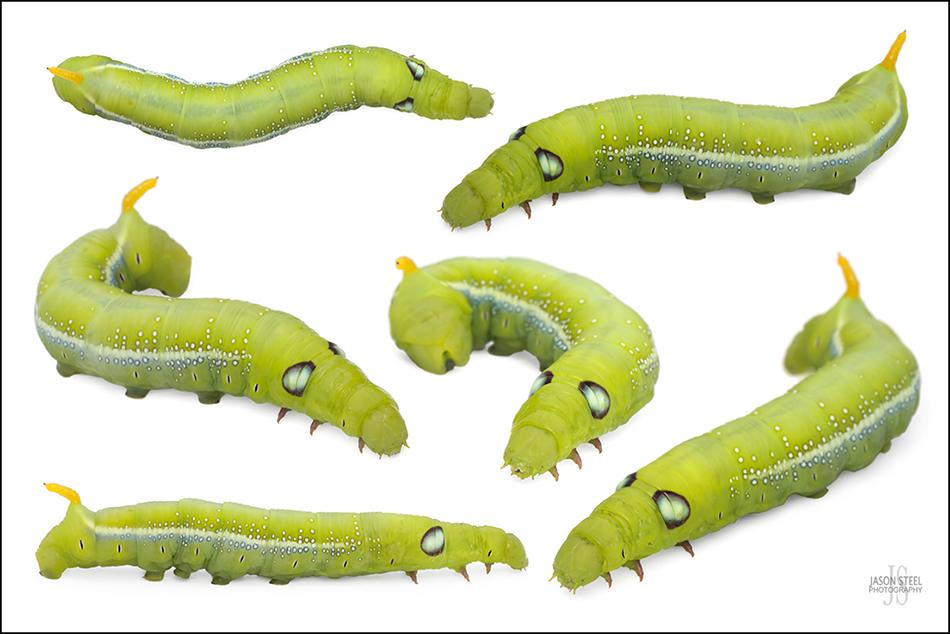
70mm Oleander Hawk-Moth larvae. This specimen was one of 8 found feeding on a bush in Cyprus, September 2023.
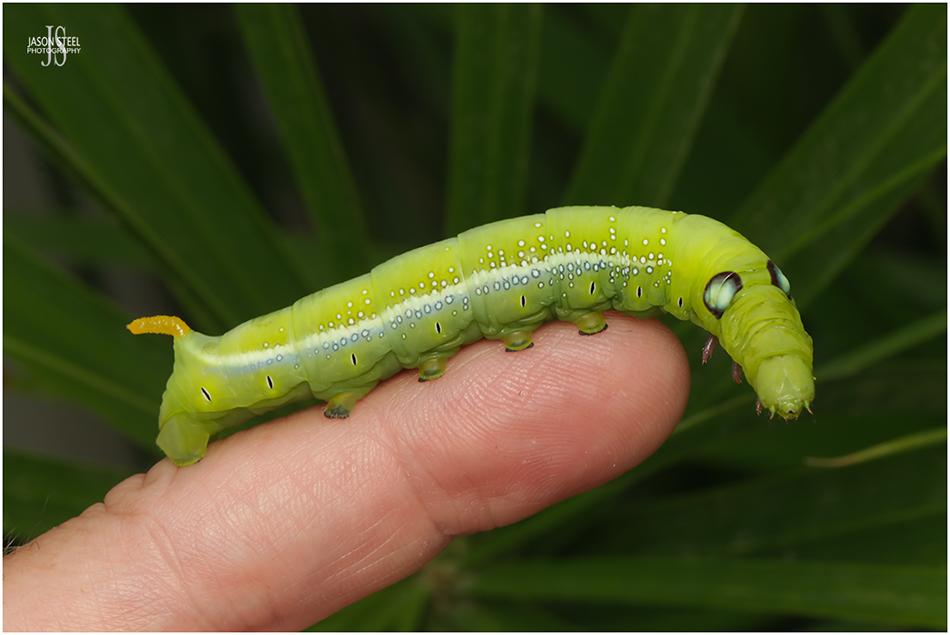
70mm Oleander Hawk-Moth larvae. This specimen was one of 8 found feeding on a bush in Cyprus, September 2023.
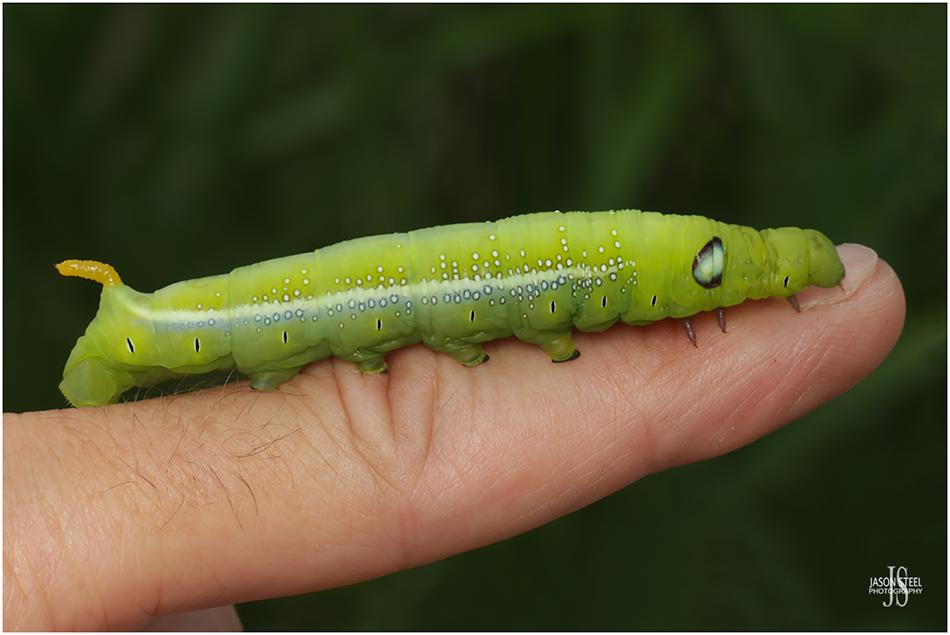
70mm Oleander Hawk-Moth larvae. This specimen was one of 8 found feeding on a bush in Cyprus, September 2023.
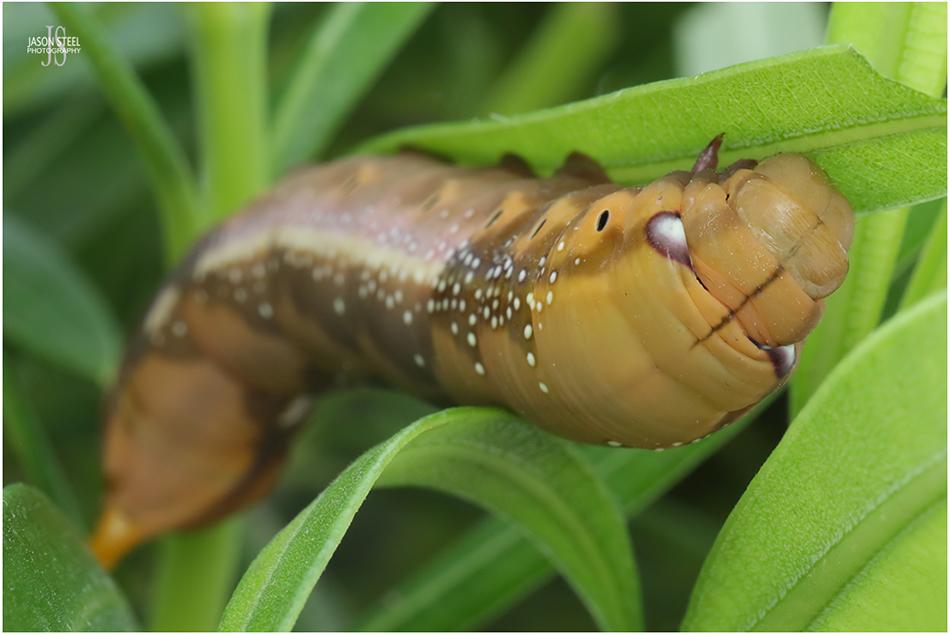
80mm Oleander Hawk-Moth larvae. This specimen was one of 8 found feeding on a bush in Cyprus, September 2023.
When threaten the Oleander Hawk-Moth larvae can draw in its upper body, and raise its head, to reveal its false eye spots. This gives the caterpillar a snake-like appearance with a large head, which may deter some would-be predators.
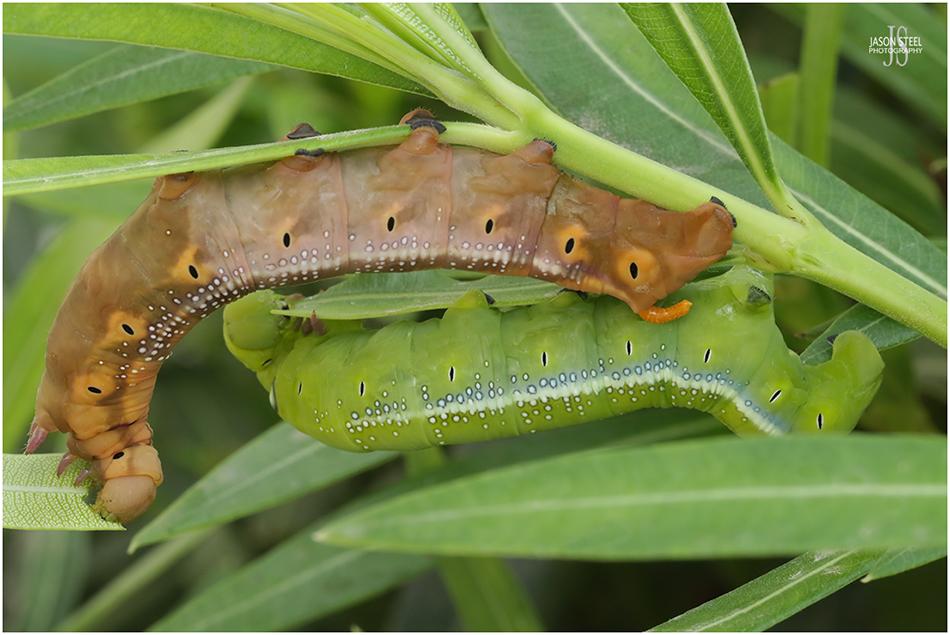
Oleander Hawk-Moth larvae. These specimens were found feeding on a bush in Cyprus, September 2023.
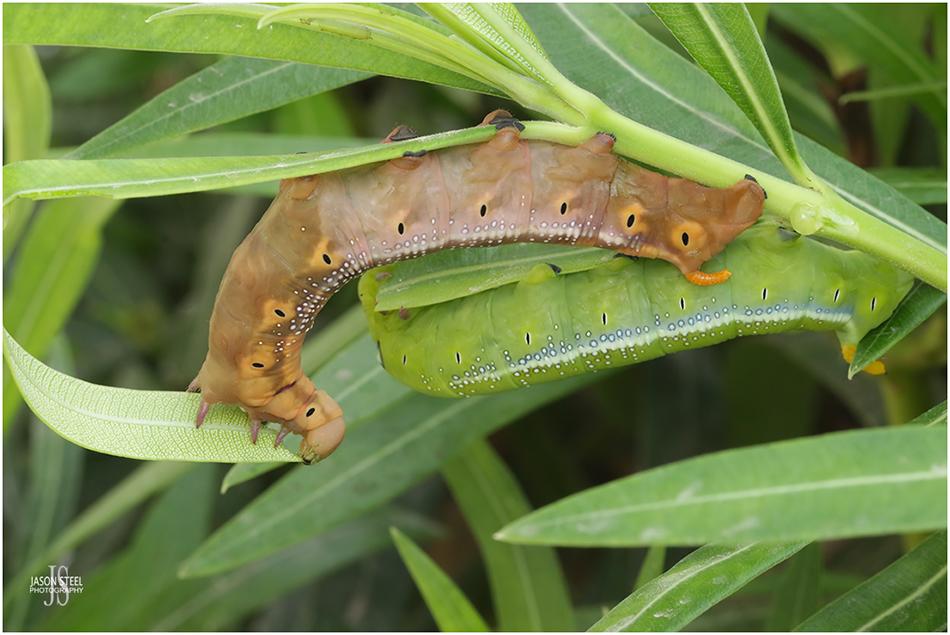
Oleander Hawk-Moth larvae. These specimens were found feeding on a bush in Cyprus, September 2023.
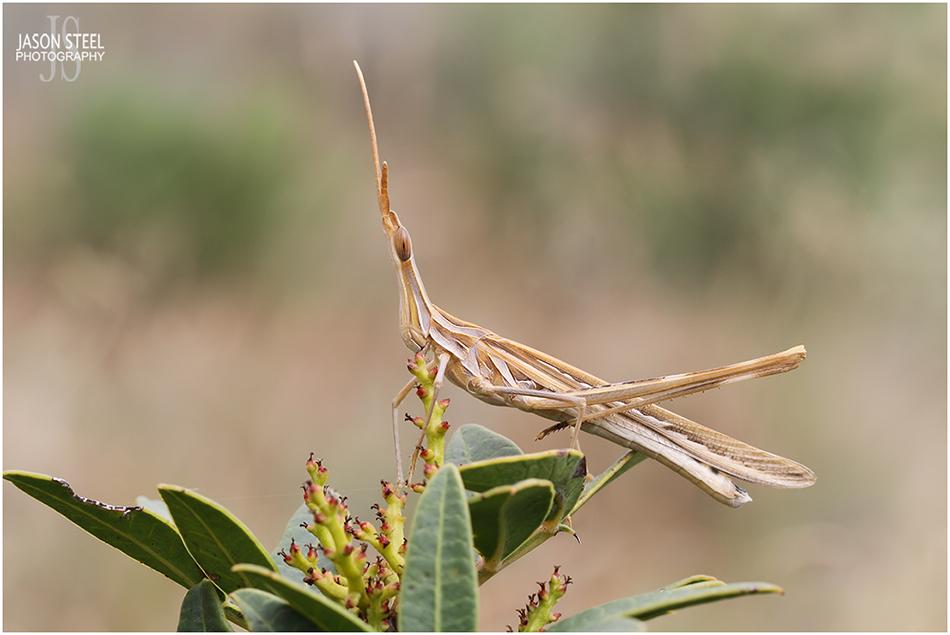
Mediterranean Slant-Faced / Cone-Headed / Slant-Nosed Grasshopper (Acrida ungarica)
A medium / large grasshopper usually found in dry, grassy areas, sand dunes and areas where vegetation is sparse at low levels. Colour can be varying shades of green or brown usually matching the colour of local vegetation. Found across Central and Southern Europe, but disappearing due to tourism and development in coastal areas. Their body-shape and colour gives great camouflage on the dry grass and vegetation which they usually reside on. There are also sub-species of this grasshopper. Adults usually grow to a length of around: Males 25-40mm, Females 41-73mm.
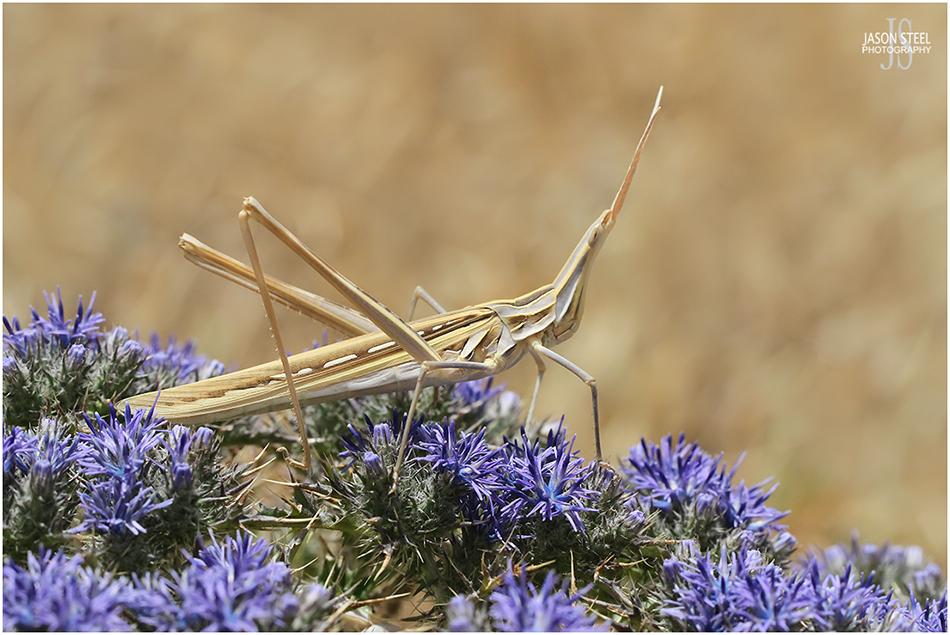
70mm Slant-Nosed Grasshopper (Acrida ungarica)
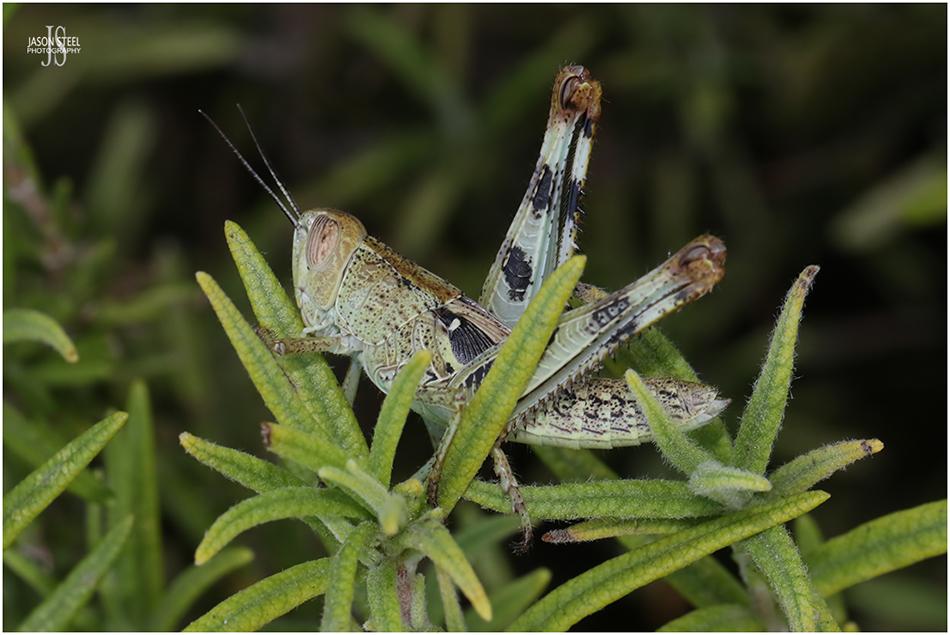
Heteracris cf littoralis found on a large bush in Paphos, Cyprus, September 2023.
Mediterranean Splendid Grasshopper - (Heteracris littoralis)
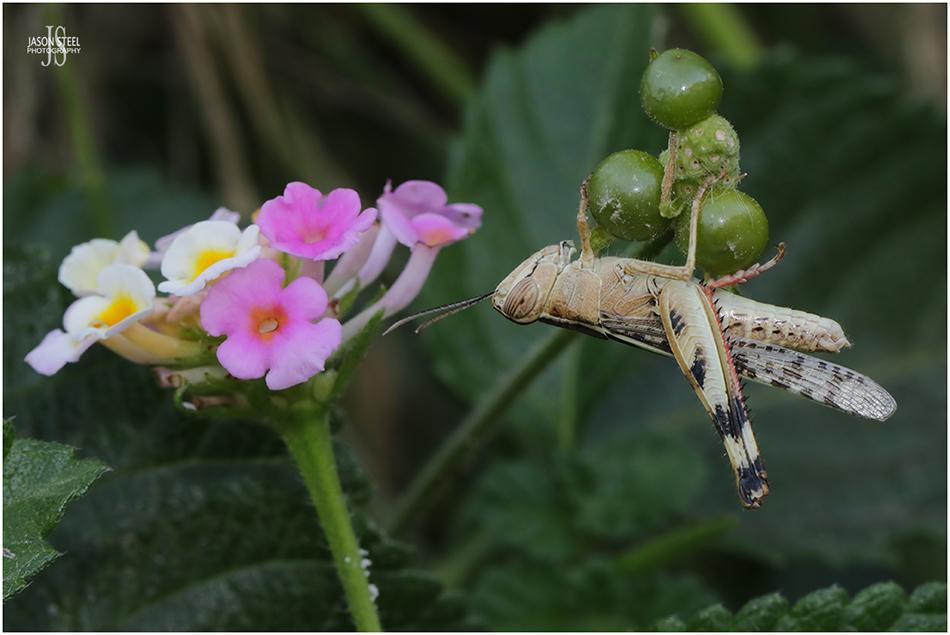
Heteracris cf littoralis found on a large bush in Paphos, Cyprus, September 2023.
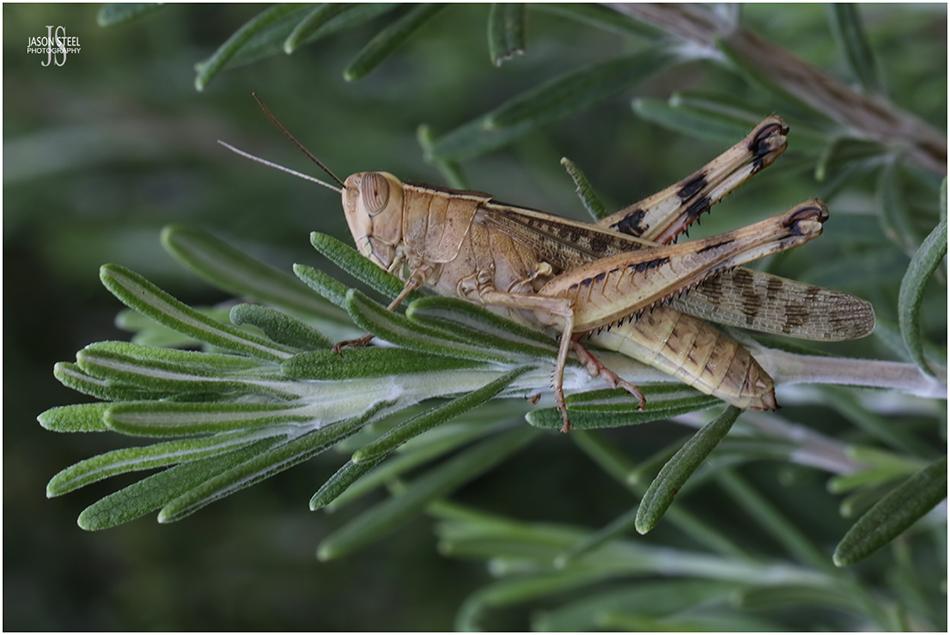
Heteracris cf littoralis found on a large bush in Paphos, Cyprus, September 2023.
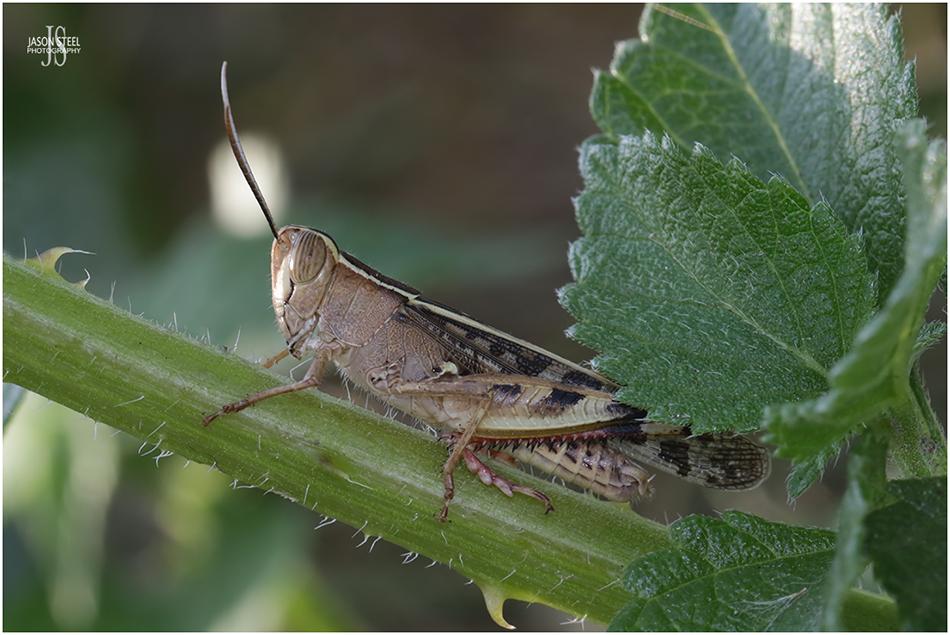
Heteracris cf littoralis found on a large bush in Paphos, Cyprus, September 2023.
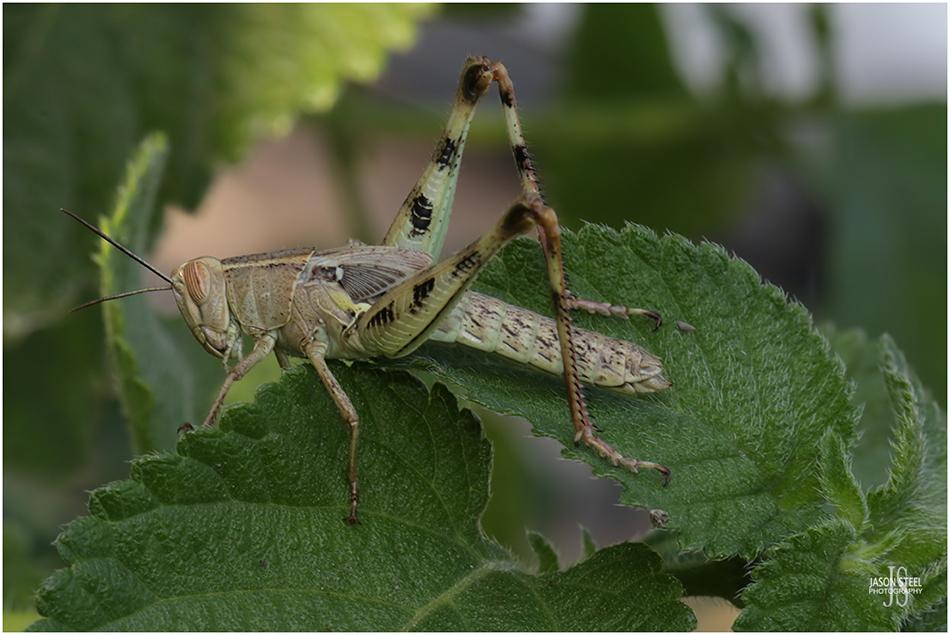
Heteracris cf littoralis found on a large bush in Paphos, Cyprus, September 2023.
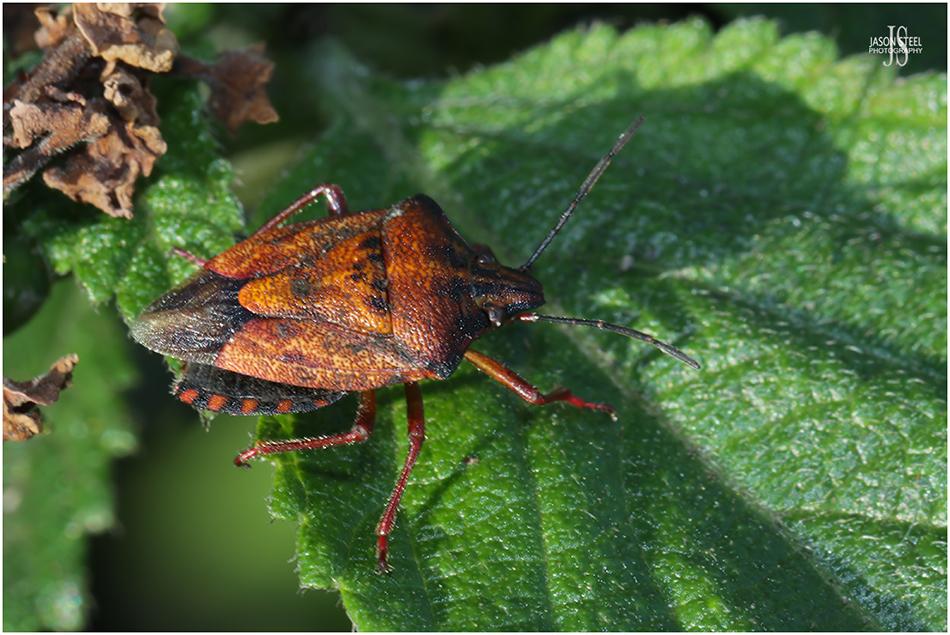
One of several Red Shield Bugs, Carpocoris species, found on flowering plants in Paphos, September 2023.
Red Shield Bug - (Carpocoris species)
There are currently around a dozen accepted species from the Carpocoris genus, and some of these species have several sub-species. Many of the Carpocoris species can be found in the Mediterranean regions and most are very difficult to accurately distinguish without very close examination. Carpocoris sp. are fairly large Shieldbugs and typically grow to around 11mm in length as an adult, and specimens can be found on a variety of flowering plants. Carpocoris can cause considerable damage to plants and some species are regarded as serious pests to vegetables, tomatoes, peas and crops, wheat, rice and sugarcane.
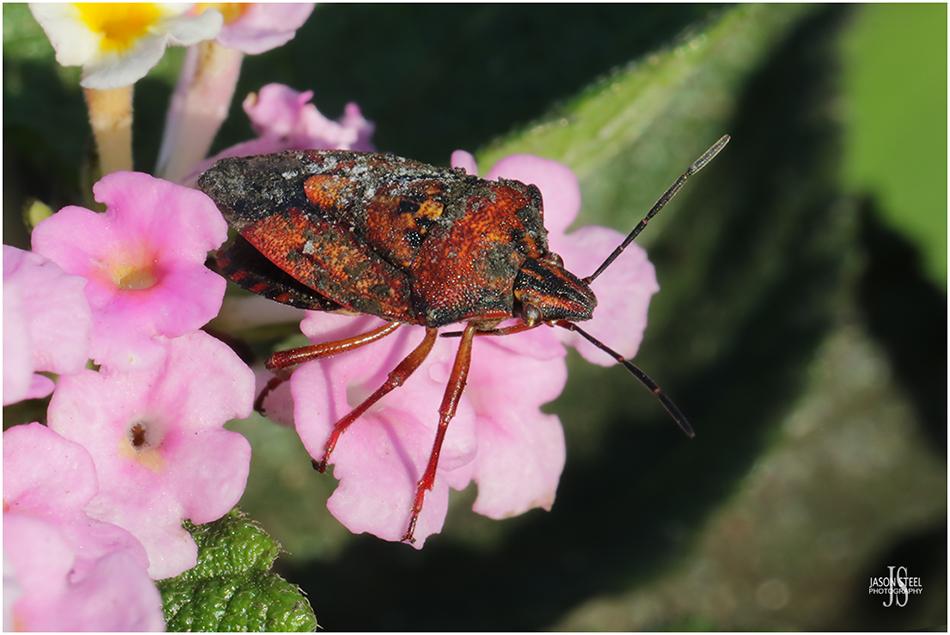
One of several Red Shield Bugs, Carpocoris species, found on flowering plants in Paphos, September 2023.
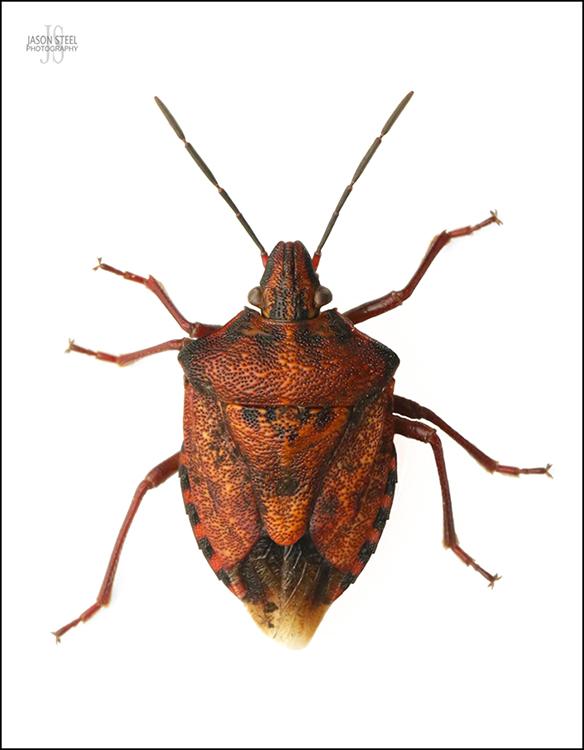
11mm Red Shield Bug, Carpocoris species, found in Paphos, September 2023.
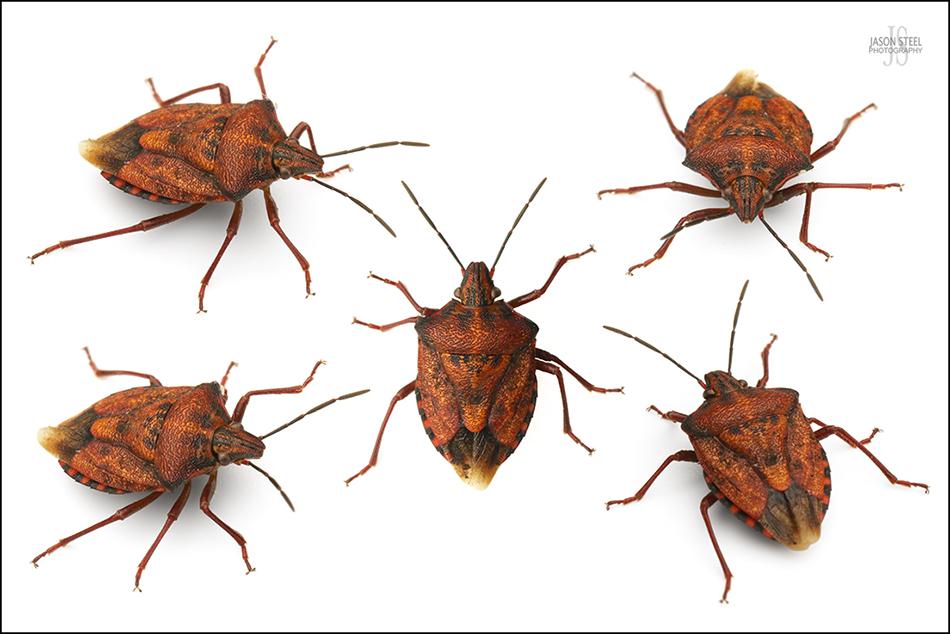
11mm Red Shield Bug, Carpocoris species, found in Paphos, September 2023.
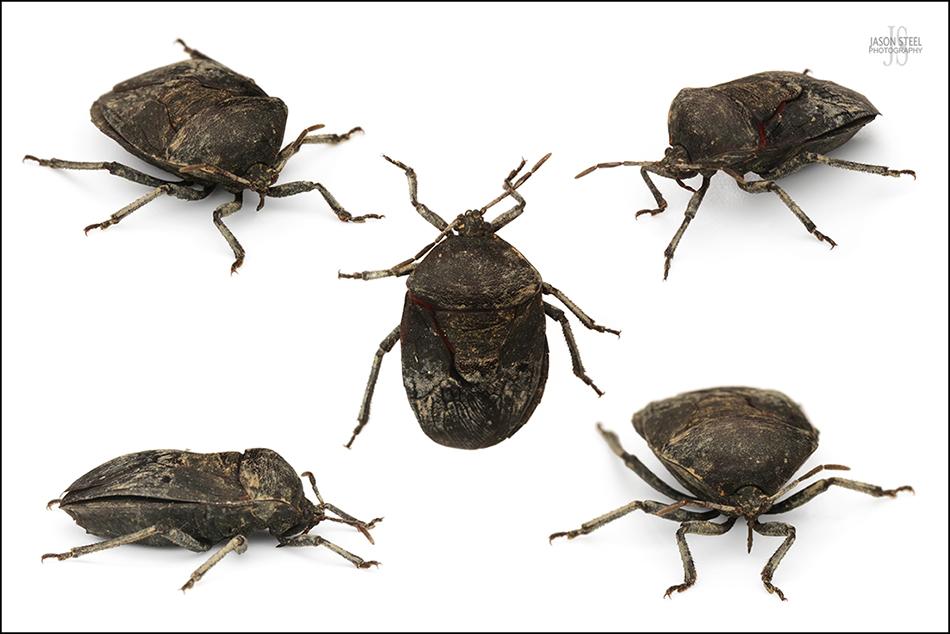
12mm Black Watermelon Bug, Cordius viduatus, found on a pathway in Paphos, Cyprus, September 2023.
Black Watermelon Bug - (Cordius viduatus)
The Black Watermelon Bug is a large and dark Shieldbug with a burnt charcoal appearance. This bug, from the Dinidoridae family, is considered to be an agricultural pest and a serious threat to watermelon crops. The Black Watermelon Bug also feeds on Cucumber and Squirting Cucumber too. This species is typically found in all African and Arabian countries, and has also been recorded in Cyprus and Turkey too.
Eggs take around 7-8 days to hatch and have a very high success rate with around 95-100% of the eggs successfully hatching. The young nymphs of the Black Watermelon Bug can vary from pale brown to a reddish-black, depending on their instar stage. The nymphs go through five nymphal instars, taking around 42-45 days before reaching maturity. The fourth and fifth instars start to resemble the adult bugs in appearance but lack the fully developed wings. Adult female Black Watermelon Bugs usually live for around 60 days, but the adult males only live for around 30 days. Both adults and nymphs can often be found in large numbers feeding from the host plants. The juices are sucked from the stems, main stem, and the leaves of the host plant. Heavily infested plants may lose their leaves and the young developing fruits.
Oils from the Black Watermelon Bug can be extracted and used both for sweetening food and for medicinal purposes. These oils have been used to treat dermatological diseases due to their antibacterial nature.
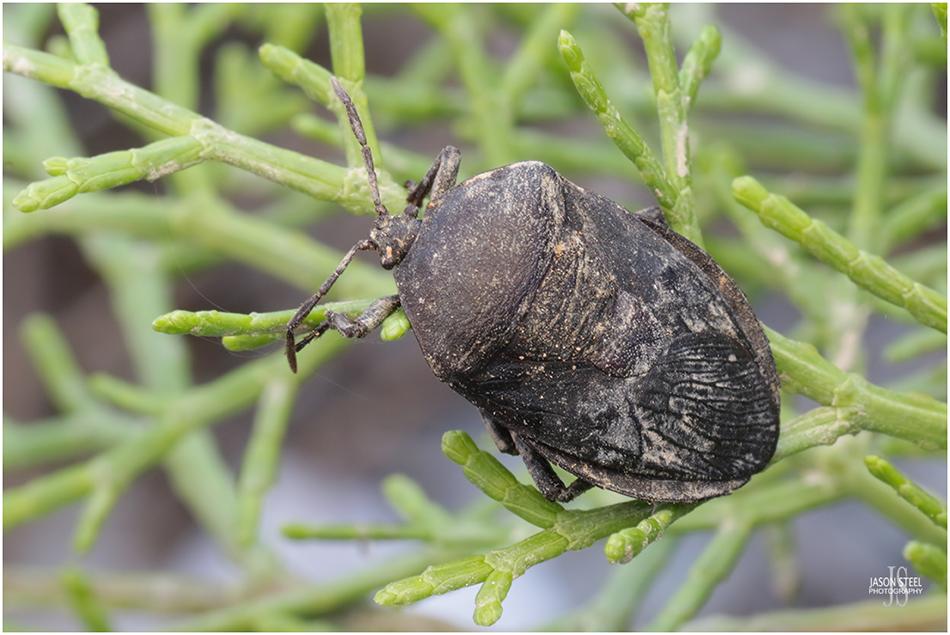
12mm Black Watermelon Bug, Cordius viduatus, Paphos, Cyprus, September 2023.
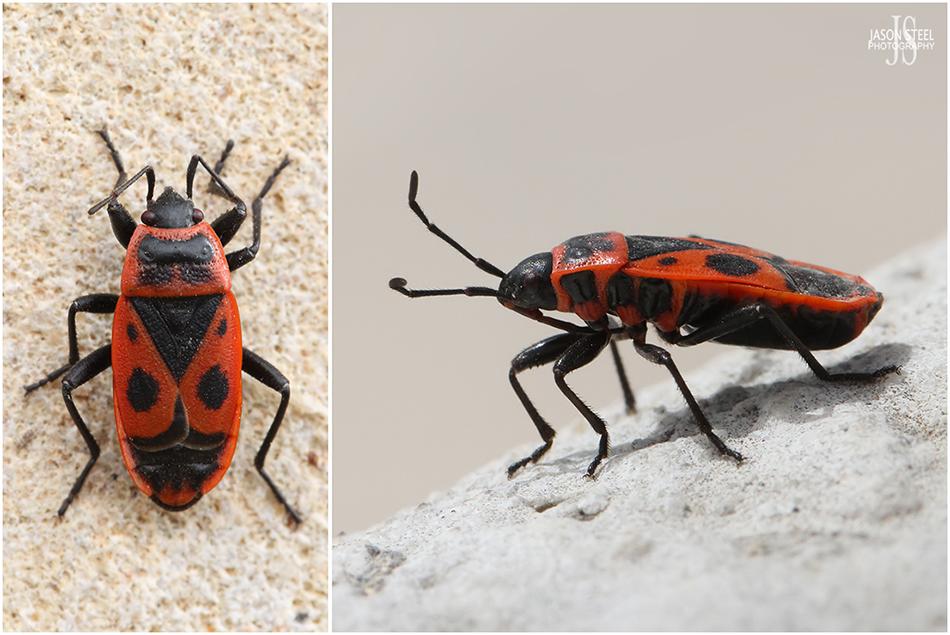
European Firebug - (Pyrrhocoris apterus)
European Firebug - (Pyrrhocoris apterus)
A true bug usually growing to around 8.5-10mm and occasionally 12mm in length. These bugs can be seen all year round but are most noticeable around April and May when they congregate in large numbers to mate. They are often found around tree-mallow and lime trees where they will feed from the fruit and seeds. The striking red and black markings resemble an African mask and are similar to the unrelated Cinnamon Squash Bug (Corizus hyoscyami). Firebugs can release a foul-smelling liquid as a defence against would be predators. Although not poisonous the aposematic bright colours of this species serve as a warning of their very bitter and unpleasant taste should they be eaten and this is enough to deter most predators.
Early instars of Firebugs are orange in colour and appear redder and develop stronger black markings as they mature. Although not native to the UK they have formed colonies in the UK on occasion and they are native to the Channel Islands. They can be mistaken for the Cinnamon Bug, Corizus hyoscyami, which is similar in appearance and native to the UK. The Cinnamon bug can be distinguished by its numerous veins in the apical wing membrane, and by its overall hairiness. There is also another bug sometimes found in the UK, from an entirely different family, which is also easily confused with both these species, this is Arocatus longiceps.
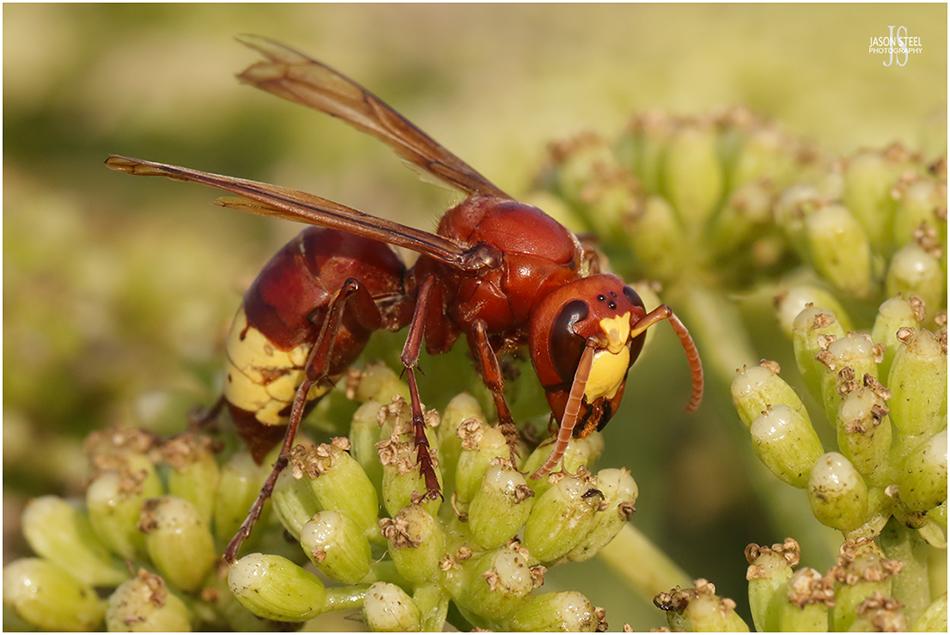
Oriental Hornet, Paphos, September 2023.
Oriental Hornet - (Vespa orientalis)
The Oriental Hornet is a large social wasp found in mainly in northern Africa, Asia and the Mediterranean region. Adult Oriental Hornets typically grow to around 25-35mm in length and feed primarily on nectar, honeydew and fruits. They also hunt other invertebrates for a rich source of protein, which they take back to the nest for the carnivorous larvae. Honey Bees often fall victim to the Oriental Hornet. The nests of Honey Bees are sometimes raided by Oriental Hornets, that will feed on both the bees, the larvae and the honey. The Oriental Hornet is not usually aggressive towards humans but when threated the sting of the Oriental Hornet is reported to be very painful. The nests of the Oriental Hornet are usually made underground. The colony peaks in size during late summer and early autumn, before new queens and drones are produced and the old queen dies. After mating has occurred between the drones and the new queens the drones soon die off. The mated queens will hibernate in cracks in the ground, or in hollows in trees, and will emerge in the spring. The queen will quickly start building a small nest where she will lay her first eggs. Most nests are built underground but occasionally paper nests are constructed in hollow trees, and are built using wood pulp. Once hatched and reared the new female workers will completely take over the tasks of gathering food and further building the nest. The queen will remain hidden in the center of the nest and will concentrate solely on laying eggs and increasing the hornet numbers in the colony. As with many species of social wasp the colony of the Oriental Hornet revolves around the queen. If the queen dies prematurely, or is killed by a predator, then the colony dies too.
Males, known as drones, can be distinguished from the female workers by the number of segments on their antenna. Drones have slightly longer antennae with 13 segments, while workers only have 12 segments. Vespa orientalis is usually the only social wasp that inhabits arid areas.
The Oriental Hornet has been shown to use the pigment xanthopterin, found in the yellow stripe on its abdomen and the yellow patch on its head, to harvest and convert light into electricity, through the process of photosynthesis. It is believed that this electricity is stored and is probably used as a source of energy, especially to power night-time activity.
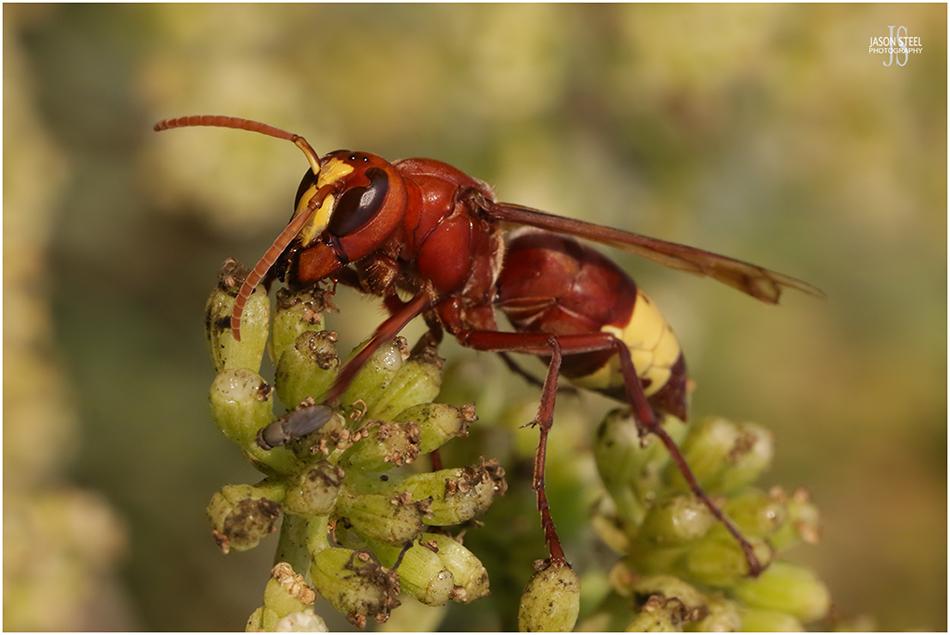
Oriental Hornet, Paphos, September 2023.
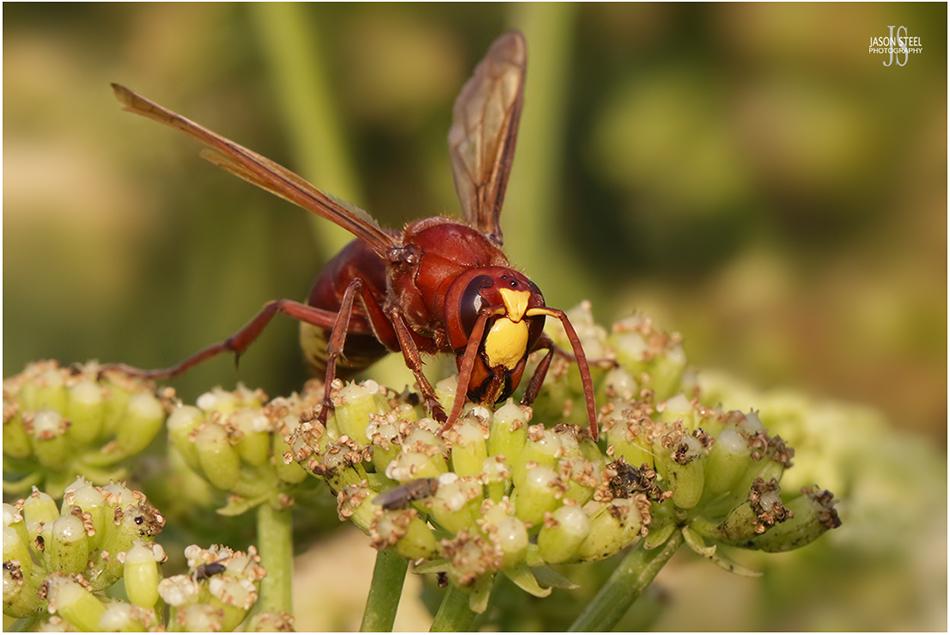
Oriental Hornet, Paphos, September 2023.
The Oriental Hornet may be expanding its range and is a species of concern to bee keepers. Very occasionally Vespa orientalis specimens have turned up in the UK as accidental stowaways with imported fruit, but Vespa orientalis has never managed to become established in the UK. - LINK
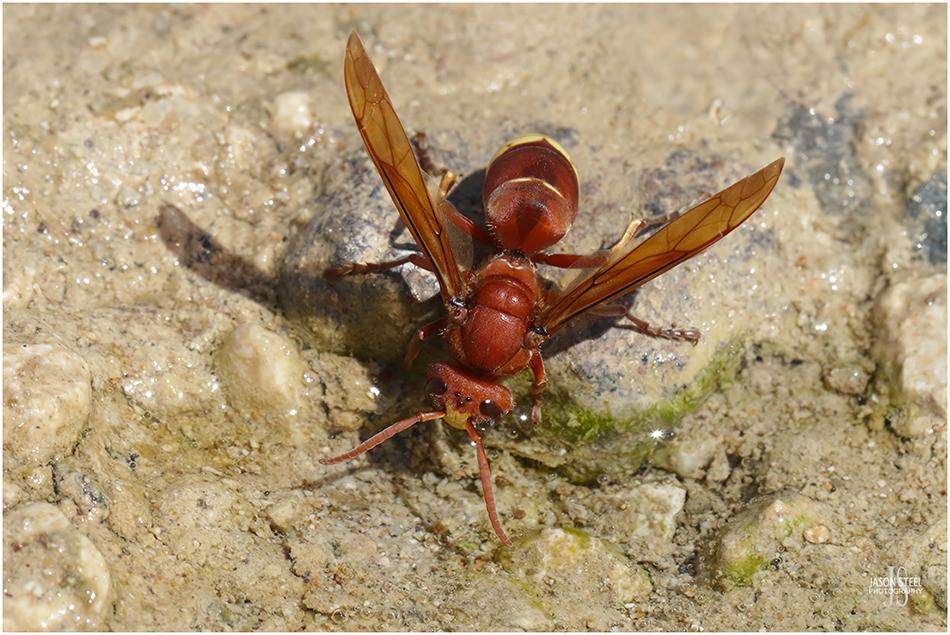
Oriental Hornet, Paphos, September 2023.
During my stay in Paphos, during September 2023, the Oriental Hornet could be found in abundance. Early each morning the hotel staff would hose down the pool area and sunbeds with fresh water. The water would then run out onto the sandy pathway, that ran along the top of beach, and form small puddles. The Oriental Hornets could be seen throughout the day in large numbers drinking from these puddles, until they dried up. If I moved slowly I was able to lay down next to the hornets, to photograph them, without disturbing them or triggering any defensive behaviour from them.
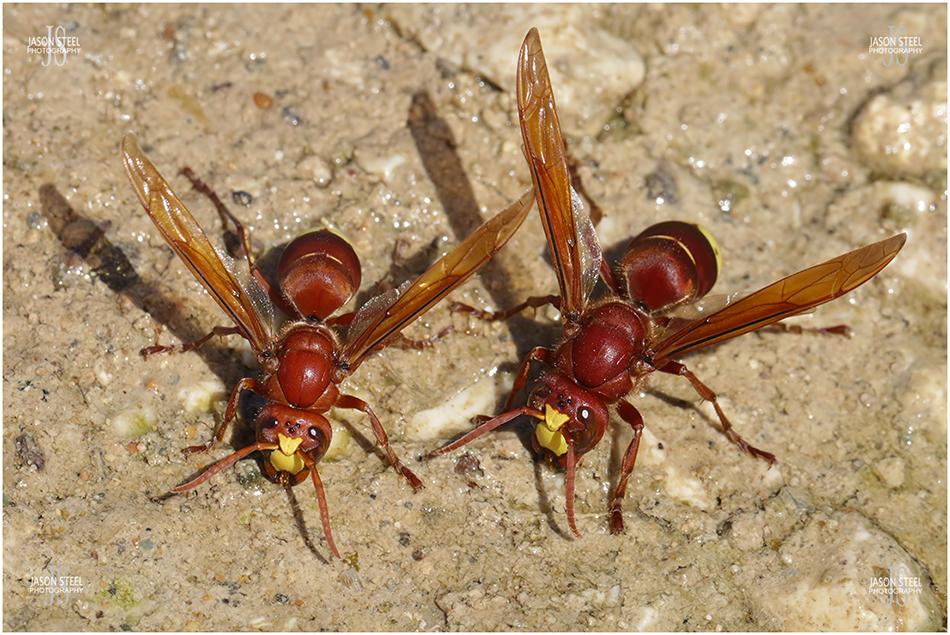
Oriental Hornets, Paphos, September 2023.
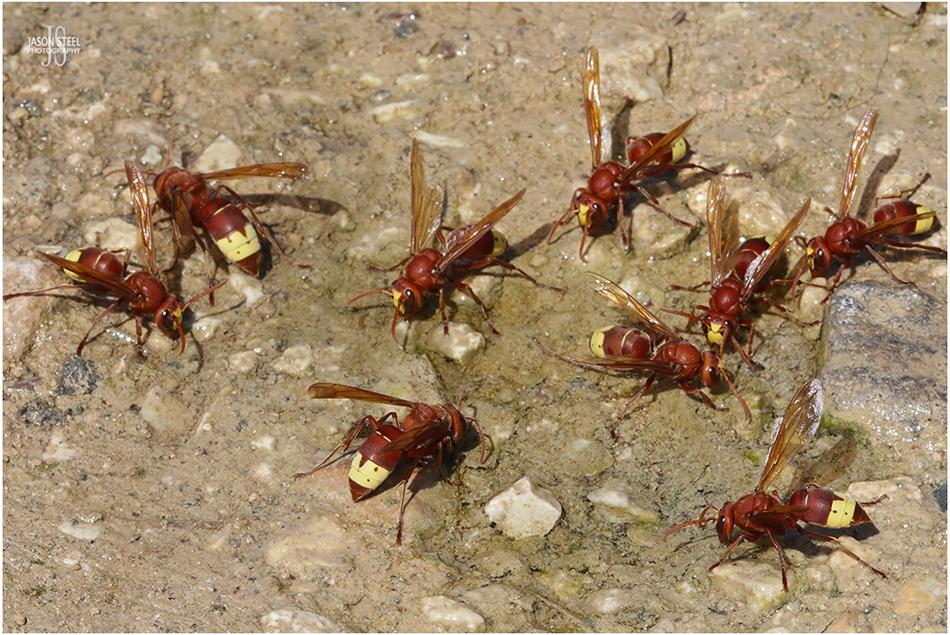
Oriental Hornets, Paphos, September 2023.
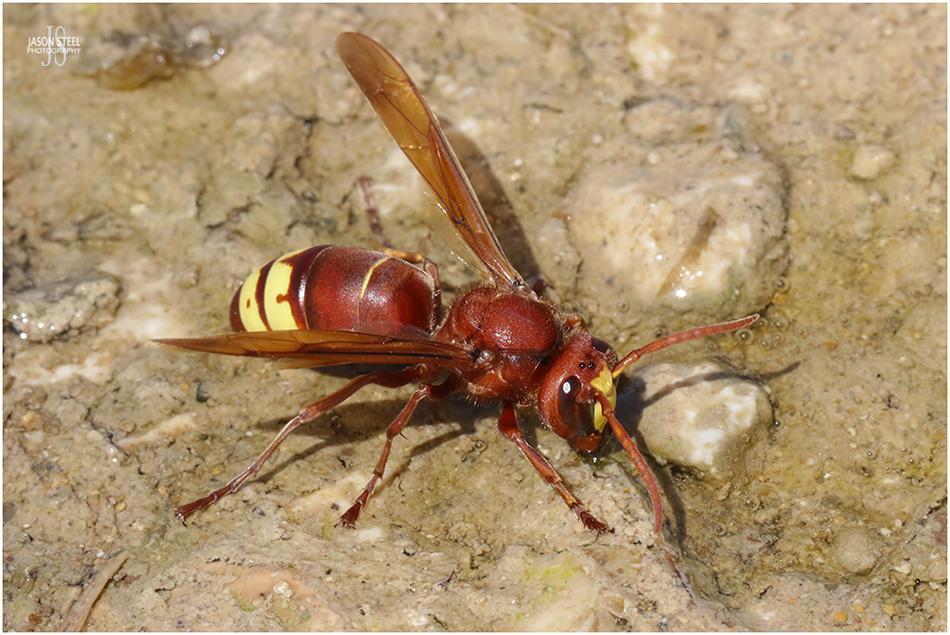
Oriental Hornet, Paphos, September 2023.
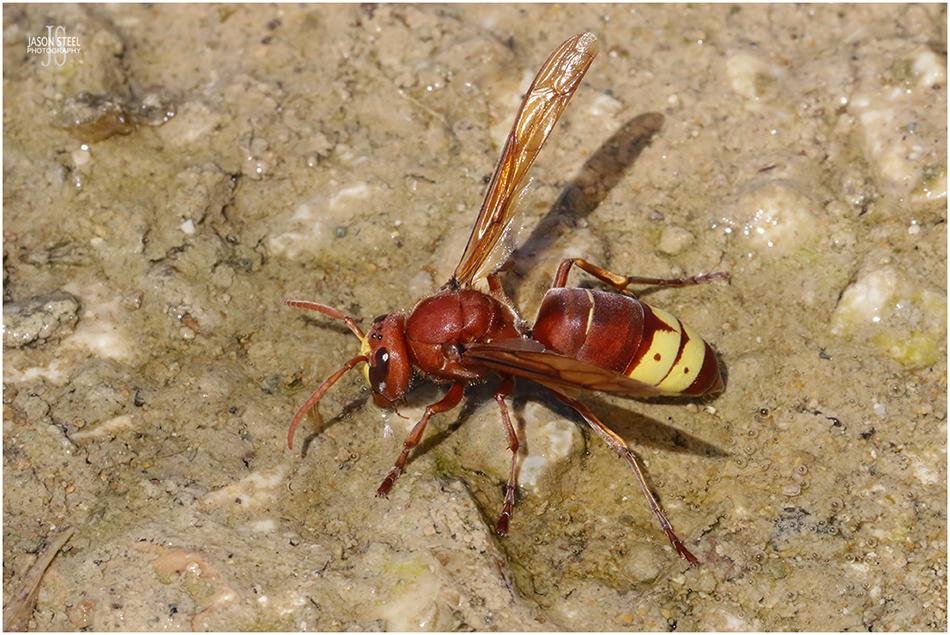
Oriental Hornet, Paphos, September 2023.
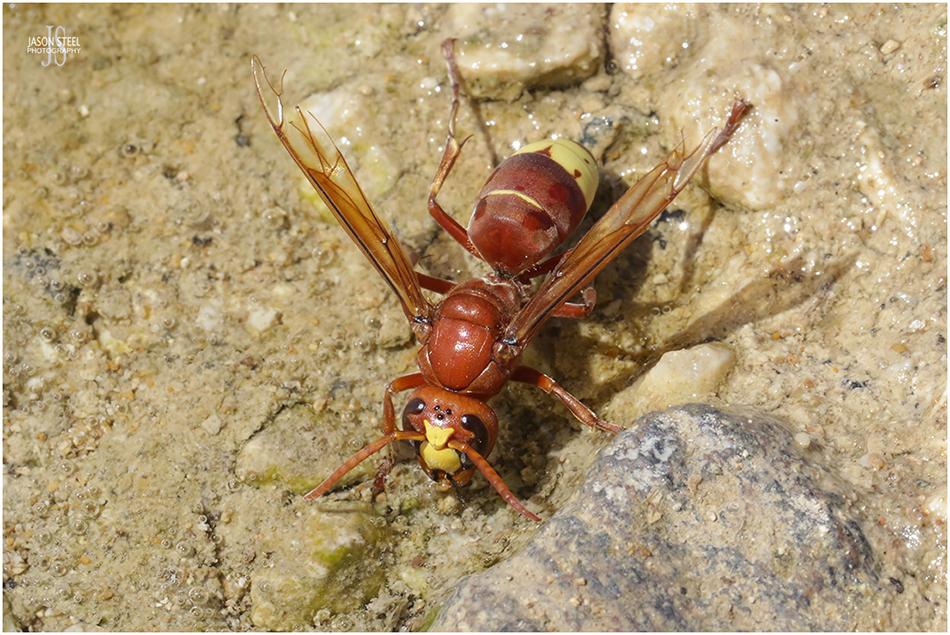
Oriental Hornet, Paphos, September 2023.
